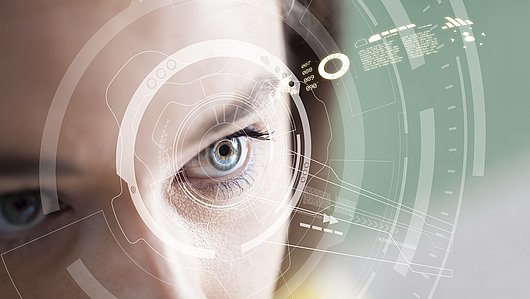AI to improve cataract surgery in the Global South
Researchers from Bonn and India work with Microsoft on AI-assisted analysis of surgical videos of the cataract

While the adequate surgical treatment of cataract is guaranteed in high-income countries, the surgical results in the Global South are often inadequate. Video recording can be used to analyze possible surgical errors, improve training and demonstrably optimize surgical results. However, this has been very time-consuming up to now. There are now promising approaches to automating surgical video analysis using artificial intelligence (AI). However, no deep learning algorithms have yet been developed for video analysis of the surgical method commonly used in countries of the Global South. Researchers from the University Hospital Bonn, the University of Bonn, the Sankara Eye Foundation India and Microsoft Research India want to change this and develop a corresponding algorithm. The aim is to improve the results of cataract surgery in the Global South in the long term. As a first important step, they have compiled an overview of previous AI approaches for analyzing cataract surgeries. The results have now been published in Translational Vision Science and Technology (TVST).
With 70 million people affected, cataract is the most common cause of blindness and severe visual impairment worldwide. In one year alone, more than 30 million cataract surgeries are performed worldwide. "However, the burden of cataract is unevenly distributed worldwide, as blindness due to cataract is around ten times more common in countries of the Global South than in high-income countries," says Dr. Maximilian Wintergerst from the Eye Clinic at the University Hospital Bonn (UKB), who also conducts research at the University of Bonn. "Against this background, the treatment of cataract in the Global South remains an important and major challenge," says Wintergerst.
Resource-saving concepts needed to improve surgical outcomes
"However, the surgical results of cataract surgery in the Global South are sometimes poor, which is mainly due to inadequate training. Depending on the country context, the surgical results are unsatisfactory in up to 30 to 50 percent of those affected who undergo surgery," explains Wintergerst. "There is therefore an urgent need to improve surgical outcomes there." The video recording of operations enables a subsequent review of the surgical procedure, video-based training and the monitoring of surgical quality and has been proven to be directly linked to the improvement of surgical outcomes: "However, it is expensive and therefore generally not available in countries of the Global South."
As part of a joint research project between the UKB, the University of Bonn, the Sankara Eye Foundation India and Microsoft Research India, an algorithm is now being developed to automatically analyze surgical videos of the cataract surgery technique commonly used in the Global South. This algorithm should not only work with conventional image material, but also with videos recorded by smartphones specially attached to surgical microscopes. The researchers hope that this will improve cataract surgery results at healthcare facilities in the Global South in the long term.
No AI yet available for analyzing common surgical techniques in the Global South
As a first important milestone, they conducted a systematic literature review of existing algorithms for the automatic video analysis of cataract surgery. There are promising initial approaches, but so far only videos from countries with high-income healthcare systems have been used. "The studies examined showed large differences in quality and are challenging in terms of replication, as there are few public data sets and the source code is rarely published," says Prof. Dr. Thomas Schultz, co-author of the study, research group leader at b-it and the Institute of Computer Science at the University of Bonn and Principal Investigator at the Lamarr Institute for Machine Learning and Artificial Intelligence. "Our literature review shows that surgical instrument tracking and surgical phase detection work well, but the assessment of surgical skills and complications is currently still a challenge." This first review paper on AI in cataract surgery video analysis is now published in Translational Vision Science and Technology (TVST).
The next step is to develop an algorithm to automatically analyze surgical videos of the cataract surgery technique commonly used in the Global South. As the researchers at the University of Bonn and the UKB have already been able to show, image recordings from smartphones can improve ophthalmologic care in India, for example. "Therefore, low-cost smartphone-based video recording of cataract surgery could be a targeted solution to improve training and surgical outcomes in countries of the Global South," adds Prof. Dr. Frank Holz, Director of the UKB Eye Clinic. "However, a comparison of smartphone-based and established conventional video recording systems is necessary in order to assess the feasibility, including the quality of the data obtained."
